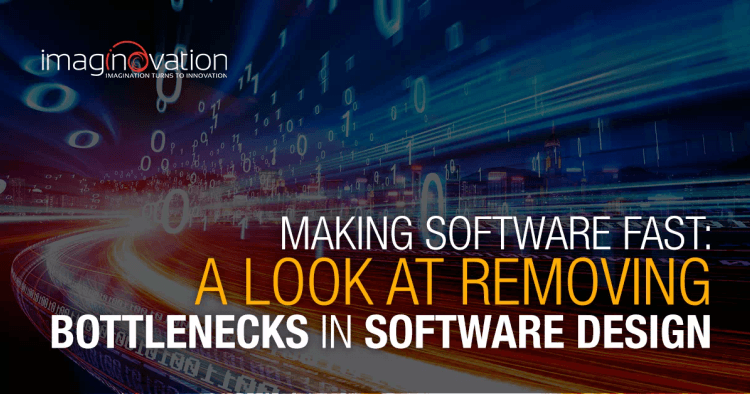Sluggish software or bottleneck in networking is frustrating to operate. Not only that, but your team members are sitting around waiting for slow programs to process — or even open — which wastes their time and your money.
What are Bottlenecks in Software Design
While everything can’t move as swiftly as we want it to, we can make programs operate faster by doing bottleneck analysis and removing in the software engineering design. Here are some of the most common bottlenecks and how to fix them.
- Threads – A thread is the smallest sequence of programmed instructions that can be managed by a scheduler. Threads do not speed up execution of code or make the computer run faster. But when done correctly, well-written threads increase efficiency by using time otherwise wasted. In some processes, this will decrease running time.
- Deadlocks – According to WhatIs, “a deadlock is a situation in which two computer programs sharing the same resource are effectively preventing each other from accessing the resource, resulting in both programs ceasing to function.” Programs used to run one at a time. As we learned to become more efficient, computers would dynamically allocate resources. But if Program A is waiting on something being used by Program B, and Program B is waiting on something from Program A, that’s a deadlock. One of them has to stop. Data must be organized in a way to prevent this.
- No scalability – “A linear-scalable application is an application that can scale just by adding more machines and/or CPUs, without changing the application code.” This is also called horizontal scaling. In other words, horizontal scaling is scale-by-duplication where everything scales by adding more of the same. We recently wrote {link to scalability blog post}, about scaling your applications. As part of that, the code should be ready to scale using more machines, or go from 100K to 1M by adding more servers running the same application. This is easy to do for some things, like web applications and APIs, but more difficult for databases. Your app should also be able to scale vertically, or scale-by-upgrade, meaning you must upgrade server parts such as processor and memory. While this is limited, the software has to be set up to take advantage of the additional resources.
- Single point of failure (SPOF) – This is a part of the system that, if it fails, causes the whole system to stop working. That’s an obvious bottleneck to correct.
- Event-driven programming – This design style is quite useful in some cases. For applications in which you want an action after an event (e.g., a mouse click), that’s fine. However, in some cases, event-driven code can be challenging to maintain, even with some good coding practices. If your program is experiencing a bottleneck, you might check here.
- Callback complexity – In some cases, you might write code that instructs the system to take some time to produce a result, instead of returning it immediately. Callbacks are used for downloading things and talking to databases. But if misused or applied elsewhere, callbacks will slow down other functions that should return immediate results.
- Stateful apps – If your program needs to save client data from one visit to the next, that’s fine. But if not, a stateless app is much less likely to cause complications and use far less bandwidth and CPU.
- Algorithm complexity – While some code must be complex to perform the needed functions, poor design or a lack of complexity management can lead to accidental complexity that slows down the application.
Other Causes of Bottlenecks in Software Design
Outside of programming, many things can cause software to operate slowly. These are merely a few common ones to check if you’re experiencing problems.
- Server – A single box can only grow so far. Even with many processors and tons of memory, a single server is just a single server with finite growth potential. Once its limit is reached, that is it. Instead, move toward a distributed system that grows out instead of up, meaning that all it has to do is duplicate itself to grow. Couple this within a cloud-based environment such as AWS and you can create nearly infinite scale.
- Database – Even with a powerful server, the database is often the bottleneck. These applications are usually limited to running on a single server and must serve hundreds to thousands of requests every minute. Consider sharding the database and/or adding a cache layer to ensure typical queries are handled outside of the databases standard load.
- Bandwidth – No matter how well-scaled the server and database, if the data is slow coming in or out, the application will be slow. Having more bandwidth is what is required, often requiring a considerable expense.
If you’re looking to make your software faster, talk to us about clearing up some bottlenecks with our comprehensive software development services.
Ready to build an app, but not sure where to start?
We've got you covered. Click the button below to get started.





